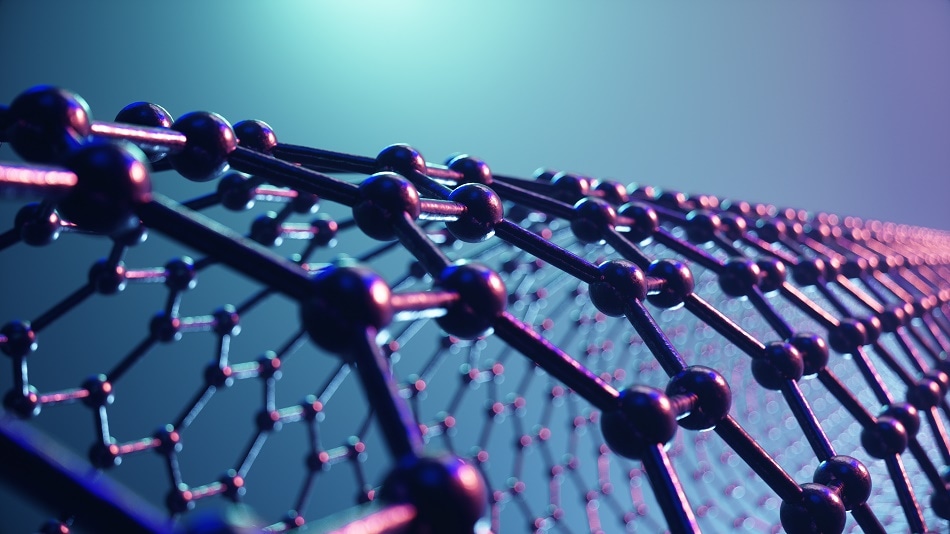
Image Credit: Shutterstock.com/Rost9
With all of the hype around graphene and its applications, researchers have produced another smart innovation which uses this sensational material by developing an electronics heat shield that is just 10 atoms thick. This has the potential to stir-up the future of the gadget industry as it could mean devices such as tablets and smartphones can be made more compact whilst performing at higher capabilities without running the risk of overheating.
Currently, when devices are exposed to increased working temperatures or start to overheat, they become noisy or even decide to shut down altogether which can often mean lost work or an inconvenience at a critical moment. It’s why Samsung had to recall its Galaxy Note phone back in 2016, due to issues with the battery overheating.
Whilst laptops and other devices may well come equipped with built-in cooling mechanisms, they can also be bulky and add extra weight to the product. Yet, according to the researchers of this new ‘heat shield’ technology, it works at the nanoscale level.
We’re looking at the heat in electronic devices in an entirely new way.
Eric Pop, Electrical Engineer, Stanford University
Developments such as these have come about due to recent research and progress in the emergent field of phononics – taken from the Greek word which is rooted in telephone, phonograph, and phonetics – thermal metamaterials such as this ‘heat shield’ are an example of such progress in this sphere.
Phononics brings together multiple disciplines across applied physics and engineering targeting primarily acoustic, elastic and/or thermal properties - usually involving the investigation and utilization of complex wave mechanisms encompassing one or more of a diverse range of phenomena such as dispersion, dissipation, resonances, and nonlinear interactions.
Therefore, by considering the heat as sound, streams of electrons that produce electricity collide with the atoms in the materials they pass through - this creates an accumulation of miniature vibrations. This cacophony of sound, at frequencies too high for the human ear to detect, is felt as heat. The team at Stanford used a technique found in most modern homes (double glazing), which uses two layers of glass to dampen sounds and reflect back the flow of heat. This same idea of the multi-layer effect was implemented in the 10 atom shield.
We adapted that idea by creating an insulator that used several layers of atomically thin materials instead of a thick mass of glass.
Sam Vaziri, Electrical Engineer, Stanford University
Scientists and researchers have been working with and analyzing materials such as graphene, molybdenum diselenide, molybdenum disulfide and tungsten diselenide for the past fifteen years. With the multi-layered approach this has enabled the creation of a patchwork-material just 10 atoms thick, top to bottom – 50,000x thinner than a standard sheet of paper.
So, as thick sheets and layers of glass can muffle the noise coming from within music studios, bleeding from the recording booth to the control room, the layers of the ‘heat shield’ material dull the atomic vibrations of the electron streams that manifest as heat. This means that the electrons are losing much of their energy as they pass through each layer resulting in a cooling effect that takes up very little space.
To make this technology available and practical for mass-production the researchers will have to consider a technique to spray or another way of depositing the atom-thin layers onto components in the manufacturing process.
The team also has further ambitions beyond that of thinner insulators for electronic devices as they hope to control vibrational energy in the same way they control energy and light.
“As engineers, we know quite a lot about how to control electricity, and we’re getting better with light, but we’re just starting to understand how to manipulate the high-frequency sound that manifests itself as heat at the atomic scale,” Eric Pop said.
This could mean exciting and further developments in both the applications of graphene and in the field of phononics as the team at Stanford come to understand heat in solid objects as a form of sound.
The research can be found here at Science Advances.
Disclaimer: The views expressed here are those of the author expressed in their private capacity and do not necessarily represent the views of AZoM.com Limited T/A AZoNetwork the owner and operator of this website. This disclaimer forms part of the Terms and conditions of use of this website.